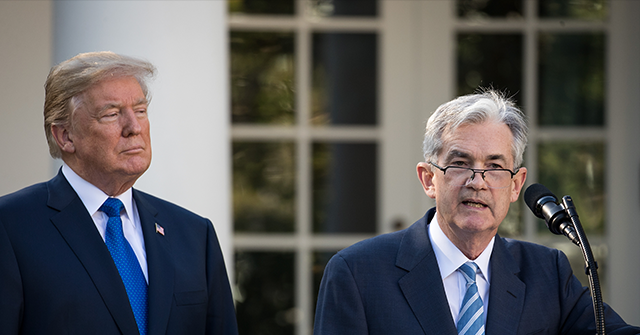Trump Wants a Rate Cut
President Trump has been calling for the Federal Reserve to begin cutting interest rates, arguing that its policy is too tight for a slowing economy. Investors increasingly seem to agree with him. Whether they’re right remains to be seen. But one thing is clear: the market is not aligned with the Fed.
As recently as March 19, the Federal Reserve’s own projections—the so-called dot plot—showed the median Fed official expected the federal funds rate to end the year at 3.9 percent. That would imply just one or two modest cuts by December.
But traders are betting otherwise. According to the CME FedWatch Tool, there is now less than an eight percent chance that the funds rate will still be above 3.75 percent by year’s end. The most likely scenario is three or more cuts, bringing the rate into the 325–350 basis point range.
The market doesn’t believe Powell; and for now, it’s siding with Trump.
The Paradox of Powell’s Optimism, Trump’s Concern
The irony in all this is that Trump seems to agree with his critics, including many on Wall Street, that the economy is fragile and needs support. Powell, by contrast, sounds increasingly like the optimist.
In his remarks last week, Powell struck a hawkish tone. He said inflation remains sticky and that the Fed is prepared to keep rates elevated for longer. But the market barely blinked and continued to price in rate cuts.
This creates an unusual situation:
- Trump is echoing the recession warnings from forecasters and market analysts.
- The market is betting the Fed will soon come around to that view.
- Powell is standing his ground, insisting policy is “well-positioned.”
If Trump and the bond market are wrong, Powell’s caution may be vindicated. But if the pessimists are right, the Fed may soon find itself playing catch-up again.
If the Gloom Is Right, Cuts Are Justified
The recession narrative is everywhere. In early April, J.P. Morgan Research raised its estimated probability of a recession this year from 40 percent to 60 percent. Consumer sentiment has been falling sharply. CNBC’s All-America survey shows that 49 percent of the public think the economy will get worse this year, the worst result since 2023.
If the economy is really weakening, as many headlines suggest, then Trump’s call for preemptive cuts looks prudent. That’s the rationale behind insurance cuts—to act before a downturn takes hold.
Of course, the Fed has a point, too. The economy is still holding up. Job growth has averaged 173,000 per month over the past two months, virtually identical to the prior six-month average. The unemployment rate is 4.2 percent, just one-tenth of a point higher than the previous six-month average. Retail sales are solid. Industrial production and housing has been surprising to the upside.
The doom is everywhere, but not yet in the data.
And that’s the disconnect: Trump and the markets are trading on expectations. Powell is reacting to actual economic conditions as they currently exist. The risk is that by the time those conditions turn, it may be too late. And “too late” is a good description of Powell’s tenure at the Fed, as Trump pointed out in a recent Truth Social post.
We don’t know yet who’s right. But it’s increasingly clear that Trump’s instincts on rates are more in tune with market pricing than Powell’s are. Whether that reflects sound judgment or premature worry will depend on what the next few months bring.
But for now, the Fed is the outlier. And Trump’s argument is winning more converts by the week.
Read the full article here
